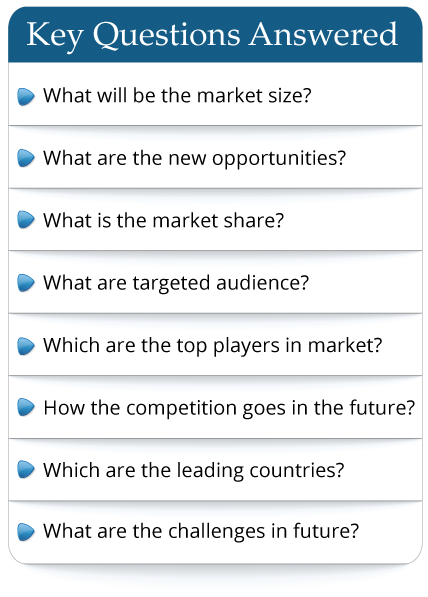Global Medical Tartaric Acid Industry Research Report, In-depth Analysis of Current Status and Outlook of Key Countries 2023-2028
Market Overview
of Global Medical Tartaric Acid market:According to our latest research, the global Medical Tartaric Acid market looks promising in the next 5 years. As of 2022, the global Medical Tartaric Acid market was estimated at USD XX million, and it?s anticipated to reach USD XX million in 2028, with a CAGR of XX% during the forecast years.
Medical Tartaric Acid is widely used in food and oral, topical, and injection preparations. Tartaric acid is generally considered non-toxic and non-irritating. Tartaric acid is present in many fruits in the form of free acids or calcium, magnesium, and potassium salts in nature. Industrially, almost all tartaric acid is prepared from potassium tartrate. Potassium tartrate is a by-product in wine making.
The global Medical Tartaric Acid Market is expected to garner a revenue of USD 356.6 million in 2026 and is expected to register a CAGR of 5.8% during the forecast period of 2019?2026.
People's consumption habits are changing, and as people's incomes increase, people are looking for healthier food. With antioxidantand and anti-inflammatory properties, it maintains a healthy immune system. It helps intestinal function as well as human digestion. Statric acid helps improve glucose tolerance. Medical staloxic acid is also used for brass cleaning, electrolytic tinned steel, and other metal coatings of gold and silver. These applications are helping to increase the use of statins in the food and beverage sector. These applications will help drive the growth of the valoric acid market. Several factors contributed to the high CAGR of the talic acid. For example, high demand in the food and beverage industry and changes in social lifestyles have led to the growth of consumer preferences. Increased demand for wine products and demand for packaged foods also contributed to the COMPOUND annual growth rate of the forecast period. Increasing consumer awareness of the health benefits of statins, such as boosting metabolism, increasing collagen production and energy production in the body, is a factor in the growth of the market for statric acid. It is the main raw material in the brewing process and has greatly contributed to the overall global demand for the product. In addition, the product is also used as an anti-clumping agent in the processing of gypsum. It can also be used in the form of anticoagulants and anti-coagulants in cement production. These factors are expected to contribute favourably to the growth of the valoric acid market in the coming years. The increasing use of this product as an emulsifier in bread production may provide a lucrative opportunity for industry participants. At the same time, industrial applications of statins, including ceramic manufacturing, textile printing, tanning, photography, etc., will further fuel the growth of the tartaric acid market during the forecast period 2019-2026. The abundance of wine consumption is expected to continue to be a major factor in the growth of the global valoric acid market during the forecast period. The increasing popularity of packaged foods, coupled with improved living standards, is expected to further complement market growth during the forecast period. In addition, it is expected that the use of statinacid as an additive and preservative in the food and beverage industry will increase to drive growth in the global market. In addition, the product has become a chelating agent in soil fertilizers and metal cleaners and is used as an excipient for drugs in the pharmaceutical industry, promising to enhance the growth of the global market.
Application Overview:
Drugs prepared from medical tartaric acid have many applications in pharmaceutical companies. The acid is used to make antibiotics and cardiotonics as an inert substance. In order to improve the taste of the medicine, medical tartaric acid is added. In the manufacture of building materials, medical tartaric acid is used, which is also used in the process of building materials, in which it acts as a retarder to delay setting, such as cement and gypsum board. Industrial and manufacturing industries use this acid in large amounts. Its derivatives include leather tanning, mirror silver plating, ceramics and photography. Medical tartaric acid has most applications in the food and beverage field and as a food additive. Due to the huge demand of the population and the rapid growth of the population, the food and beverage industry is continuing to grow. When sourness is needed in food, medical tartaric acid can be added as an antioxidant.
This report covers a research time span from 2018 to 2028, and presents a deep and comprehensive analysis of the global Medical Tartaric Acid market, with a systematical description of the status quo and trends of the whole market, a close look into the competitive landscape of the major players, and a detailed elaboration on segment markets by type, by application and by region.
Key Takeaways from the Global Medical Tartaric Acid Market Report:
Market Size Estimates: Medical Tartaric Acid market size estimation in terms of value and sales volume from 2018-2028
Market Trends and Dynamics: Medical Tartaric Acid market drivers, opportunities, challenges, and risks
Macro-economy and Regional Conflict: Influence of global inflation and Russia & Ukraine War on the Medical Tartaric Acid market
Segment Market Analysis: Medical Tartaric Acid market value and sales volume by type and by application from 2018-2028
Regional Market Analysis: Medical Tartaric Acid market situations and prospects in North America, Asia Pacific, Europe, Latin America, Middle East, Africa
Country-level Studies on the Medical Tartaric Acid Market: Revenue and sales volume of major countries in each region
Medical Tartaric Acid Market
Competitive Landscape
and Major Players: Analysis of 10-15 leading market players, sales, price, revenue, gross, gross margin, product profile and application, etc.Trade Flow: Import and export volume of the Medical Tartaric Acid market in major regions.
Medical Tartaric Acid Industry Value Chain: Medical Tartaric Acid market raw materials & suppliers, manufacturing process, distributors, downstream customers
Medical Tartaric Acid Industry News, Policies & Regulations
Key players in the global Medical Tartaric Acid market are covered in Chapter 12:
SYNFINE
Boehringer-Ingelheim
CAMBREX
Labseeker Inc
AlliChem, LLC
CARBOMER
Wonda Science
In Chapter 2 and Chapter 15.1, based on types, the Medical Tartaric Acid market from 2018 to 2028 is primarily split into:
Organic Synthesis
Artificially Synthesized
In Chapter 3 and Chapter 15.2, based on applications, the Medical Tartaric Acid market from 2018 to 2028 covers:
Drug Industrial Raw Materials
Chiral Catalyst
Antioxidant
Deoxidant
Other
Geographically, the detailed analysis of consumption, revenue, market share and growth rate of the following regions are covered in Chapter 7, 8, 9, 10, 11, 15.3, 15.4:
North America (Covered in Chapter 7)
United States
Canada
Asia-Pacific (Covered in Chapter 8)
China
Japan
India
South Korea
Southeast Asia
Australia
Others
Europe (Covered in Chapter 9)
Germany
France
UK
Italy
Spain
Russia
Poland
Others
Latin America (Covered in Chapter 10)
Mexico
Brazil
Argentina
Others
Middle East and Africa (Covered in Chapter 11)
GCC Countries
Africa
Others
The data of this research report is mainly obtained from industry associations, magazines, press releases, national customs, annual reports of enterprises, expert interviews, paid databases and other channels with authority. It also provides scientific forecasts of the industry's core development indicators through professional analysis and forecasting models.
In short, whatever role you take in this industry value chain, this report will help you or your company to acquire a systematic and in-depth understanding of the industry.
Chapter Outline
This report consists of 16 chapters. Below is a brief guideline to help you quickly grasp the main contents of each chapter:
Chapter 1 starts the report with an overview of the Medical Tartaric Acid market, as well as the definitions of the target market and the subdivisions. Through the presented global market size, regional market sizes, and segment market shares, you will be able to draw an overall and comprehensive picture of the market situation. Meanwhile, the research method and data source will be shared in this chapter.
Chapter 2 and Chapter 3 breaks down the market by different types and applications, with historic data presented in metrics of sales volume, revenue, market share and growth rate.
Chapter 4 elaborates on market dynamics and future trends in the industry, which contains an in-depth analysis of market drivers, opportunities, challenges, and risks. Other essential factors that will have a major impact on the market, i.e., industry news and policies in recent years, global inflation, and regional conflict, are also taken into consideration.
Chapter 5 compares the sales volume and revenue of the major regions across the globe, which enables the readers to understand the regional competitive pattern.
Chapter 6 is the analysis of the trade flow. Import volume and export volume are revealed on a regional level.
Chapters 7-11 focus on country-level studies. Data from the major countries in each region are provided, showing the current development of the industry in different countries. Besides, you will also find qualitative trends analysis under global inflation under each of the 6 regions.
Chapter 12 first up presents the competitive landscape by displaying and comparing the revenues, sales volumes, and market shares of the top players in the market, followed by a company-by-company analysis of all the major market participants with introductions of their products, product applications, company profiles, and business overview. In addition, their competitiveness is manifested through numbers of sales volume, revenue, price, gross and gross margin.
Chapter 13 looks into the whole market industrial chain, ranging from the upstream key raw materials and their suppliers to midstream distributors and downstream customers, with influences of global inflation taken into consideration.
Chapter 14 is perfect for those who wish to develop new projects in the industry. This chapter sheds a light on industry entry barriers and gives suggestions on new project investments.
Chapter 15 forecasts the future trend of the market from the perspective of different types, applications, and major regions.
Chapter 16 is the conclusion of the report which helps the readers sum up the main findings and insights.
Years considered for this report:
Historical Years:
2018-2022Base Year:
2022Estimated Year:
2023Forecast Period:
2023-2028Frequently Asked Questions
This market study covers the global and regional market with an in-depth analysis of the overall growth prospects in the market. Furthermore, it sheds light on the comprehensive competitive landscape of the global market. The report further offers a dashboard overview of leading companies encompassing their successful marketing strategies, market contribution, recent developments in both historic and present contexts.
- By product type
- By End User/Applications
- By Technology
- By Region
The report provides a detailed evaluation of the market by highlighting information on different aspects which include drivers, restraints, opportunities, and threats. This information can help stakeholders to make appropriate decisions before investing.
Please Select a Format












